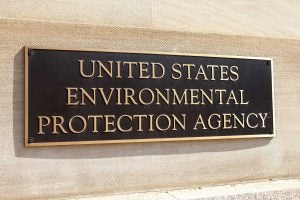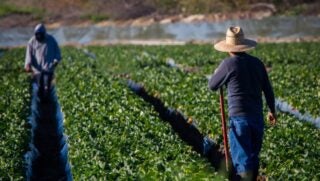Project 2025 — the strategically detailed playbook that the Republican Party has crafted in anticipation of a second Donald Trump presidency — includes all manner of categories that would be addressed during the White House transition, such as personnel, welfare, economics, and defense. A subset of the General Welfare section focuses on the Department of Agriculture and Environmental Protection Agency, two organizations that have a direct impact on the success and sustainability of American farmers and ranchers.
The full document, titled Mandate for Leadership: A Conservative Promise, is a massive 919-page agenda that would expand presidential powers and touts itself as being “prepared by and for conservatives who will be ready on Day One of the next Administration to save our country.” With the 2024 farm bill making its way through Congress and farmers feeling like they’re continuously being used as pawns in high-stakes negotiations on Capitol Hill, having a document like this should bring some comfort to producers who want to know exactly where they stand with the Republican Party.
“If we are going to rescue the country from the grip of the radical Left, we need both a governing agenda and the right people in place, ready to carry this agenda out on day one of the next conservative administration. This is the goal of the 2025 Presidential Transition Project,” the project’s website reads.

So, what exactly does this mean for farmers, ranchers, and other stakeholders in agriculture? The full document hits on major points such as farm subsidies, pesticide research, conservation programs, and biotechnology.
This article is intended to summarize relevant ag sections of the document, not to analyze Project 2025’s viability or comment on its potential impact or likelihood of implementation. There are 30 chapters in all, and touch on varying degrees of governmental change and authority.
Mandate Chapter 10 relates to the Department of Agriculture and was written by Daren Bakst, who is director of the Competitive Enterprise Institute’s Center for Energy and Environment. Bakst begins by laying out a vision for agriculture to operate “without unnecessary government intervention” to flourish best and provide affordable and healthy food options.
“The U.S. Department of Agriculture (USDA) can and should play a limited role, with much of its focus on removing governmental barriers that hinder food production or otherwise undermine efforts to meet consumer demand,” he writes. “The USDA should recognize what should be self-evident: Agricultural production should first and foremost be focused on efficiently producing safe food.”
In that vein, the mandate takes issue with the inclusion of equity and climate change as part of the USDA’s mission statement under the Biden Administration. An early initiative under Trump’s leadership would be to reframe that mission statement, including promoting more information sharing, a focus on research, and the identification of threats to food safety.
“A proper mission would clarify that the department’s primary focus is on agriculture and that the USDA serves all Americans. The USDA’s ‘client’ is the American people in general, not a subset of interests, such as farmers, meatpackers, environmental groups, etc.,” the document says.

Among the key issues that Project 2025 identifies in agriculture are:
- To defend American agriculture, particularly in the approach to the food supply chain and improving efficiencies. “One of the important lessons learned during the COVID-19 pandemic was how critical it is to remove barriers in the food supply chain — not to increase them,” the document says. It lobbies for more respect for farmers and not to promote “expensive and land-intensive” production methods like organic to growers. Additionally, one goal is to distance U.S. farmers and ranchers from the U.N. and its policies.
- To address abuses in the mechanism that funds farm-bill programs, where $30 billion a year is at stake. “Billions of dollars are being used for programs that Congress never envisioned or intended,” Bakst writes, most notably highlighting the push toward climate-change policies.
- To overhaul the farm subsidy program, including how subsidies are intertwined with agricultural policy and can influence planting decisions. “The overall goal should be to eliminate subsidy dependence,” Project 2025 states. “Despite what might be conventional wisdom, many farmers receive few to no subsidies, with most subsidies going to only a handful of commodities … that account for only 28 percent of farm receipts.” It calls for a full repealing of the Agriculture Risk Coverage (ARC) program and the Price Loss Coverage (PLC) program, with the idea that those participating in these programs already have access to federal crop insurance. The document forcefully speaks against producers getting federal money for the same issue twice in one year.
- To reform conservation programs, including the Conservation Reserve Program. “Farmers should not be paid in such a sweeping way not to farm their land,” the GOP said. “If there is a desire to ensure that extremely sensitive land is not farmed, this should be addressed through targeted efforts that are clearly connected to addressing a specific and concrete environmental harm.”
- Overhauling or eliminating marketing orders and checkoff programs, which the document calls “some of the most egregious programs run by the USDA.” Changes against this “tax — a means to compel speech — and government-blessed cartels” would shift instead to being handled at a private level if collaboration by both sides is sought.
- Remove obstacles to agricultural biotechnology, particularly in how genetically engineered food is labeled. “The USDA should strongly counter scare tactics regarding agricultural biotechnology and adopt policies to remove unnecessary barriers to approvals and the adoption of biotechnology,” the mandate says.
- To move food and nutrition programs to the Department of Health and Human Services and reform SNAP. Food assistance programs have long been questioned in relation to agricultural production and the farm bill, with this chapter stating, “All means-tested antipoverty programs should be overseen by one department — specifically HHS, which handles most welfare programs.”
While this section specifically looked at what was happening with the USDA, another section, Chapter 13 in the GOP playbook, explores changes with the Environmental Protection Agency, which itself influences many facets of the agricultural industry.
This chapter was written by Mandy Gunasekara, who is described as a veteran climate and energy strategist, communicator, and environmental attorney.
“A conservative U.S. Environmental Protection Agency (EPA) will take a more supportive role toward local and state efforts, building them up so that they may lead in a meaningful fashion,” she writes. “This will include the sharing of federal resources and agency expertise.”

Among the key issues that Project 2025 identifies in environmental policy and that relate to farmers and ranchers are:
- Reforms relating to pesticide approval and reviews, where more is done to vet the data used during reviews and not caving to low-quality or non-transparent data that may be publicly accessible. Too often, the document notes, is that review data doesn’t adhere to the same rigor that original agency testing data used.
- Increasing leadership and budgets for the Office of Pollution Prevention and Toxics and the Office of Pesticide Programs. “Pesticide manufacturers feel that the program is underfunded and would like its budget to be increased so that pesticide actions can be reviewed more quickly,” the document explains.
- Reforms at the Office of Water, which “has generated a large number of expansive regulations that infringe on private property rights, most notably with the Waters of the U.S. program.” The mandate wants significantly more clarity and regulatory certainty about what constitutes navigable waterways, to the point where it says it would be prudent to “codify the definition in Rapanos v. United States that ‘waters of the United States’ can refer only to ‘relatively permanent, standing or continuously flowing bodies of water … as opposed to ordinarily dry channels through which water occasionally or intermittently flows.'”
Since liberal comedian John Oliver did an episode on Project 2025 for his HBO series Last Week Tonight on June 20, a large number of mainstream media outlets have latched onto the project and offered varying degrees of analysis, with significant alarm raised by outlets that tend to favor Democrats, such as MSNBC, The Daily Beast, and Forbes.
It’s safe that as the November election day gets closer, more and more commentary among the national media will be tailored toward the potential impacts of Project 2025.



